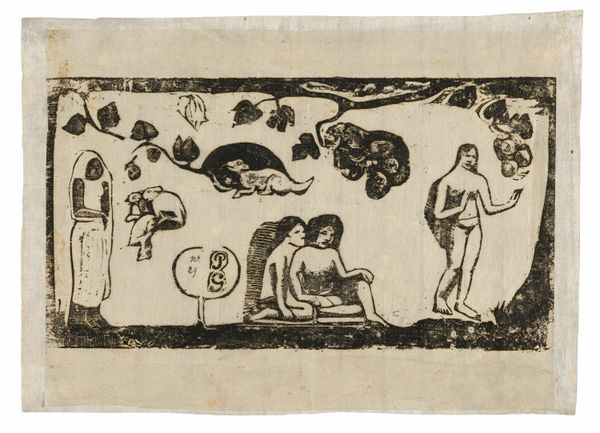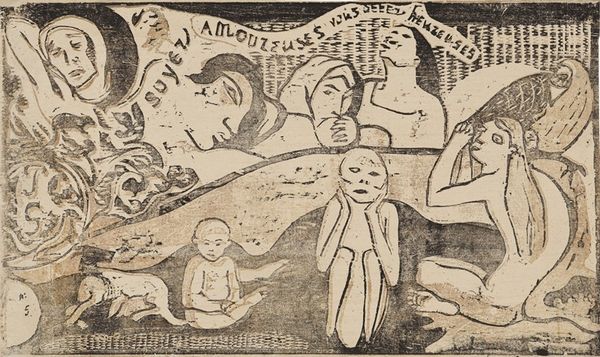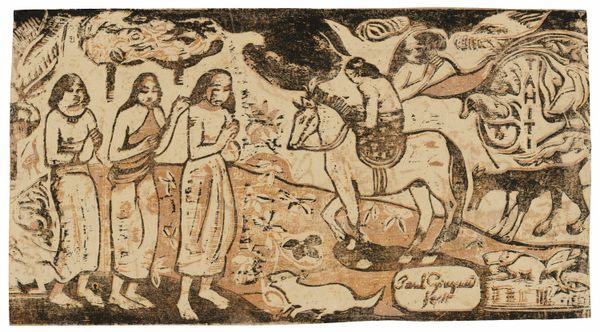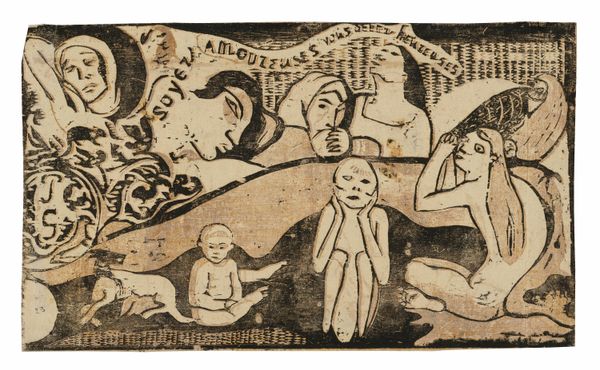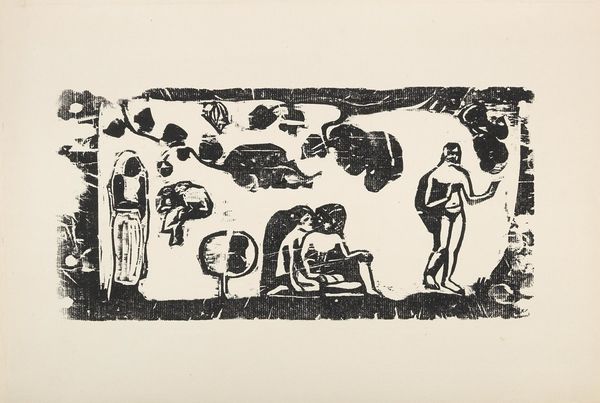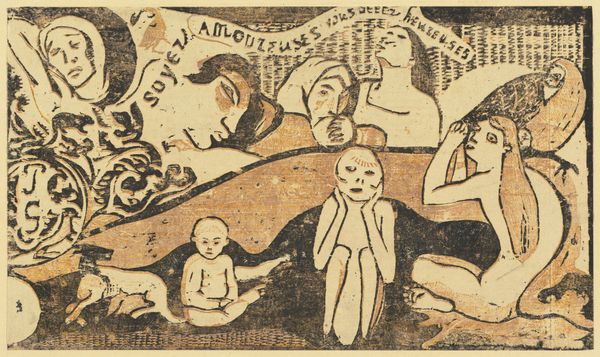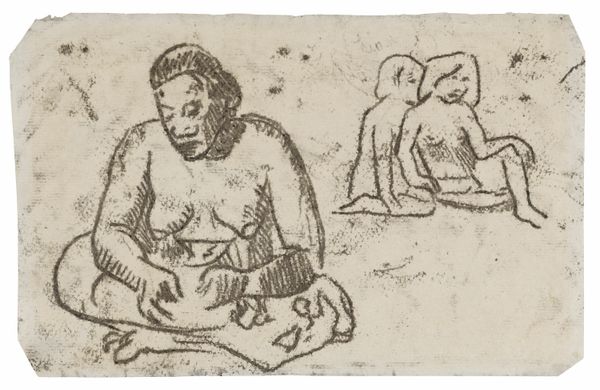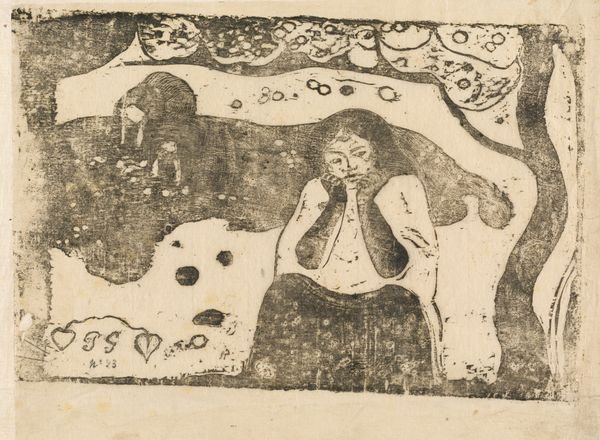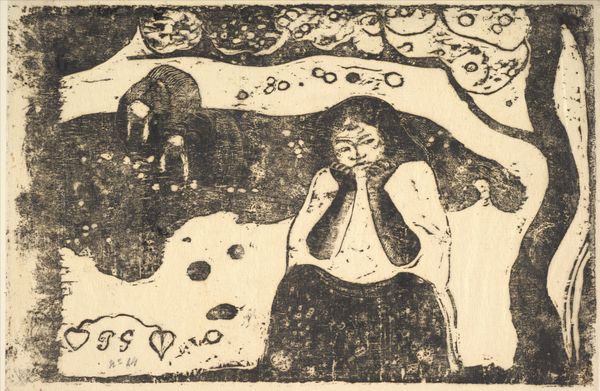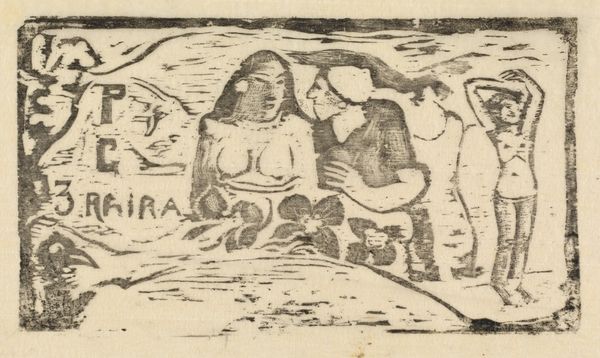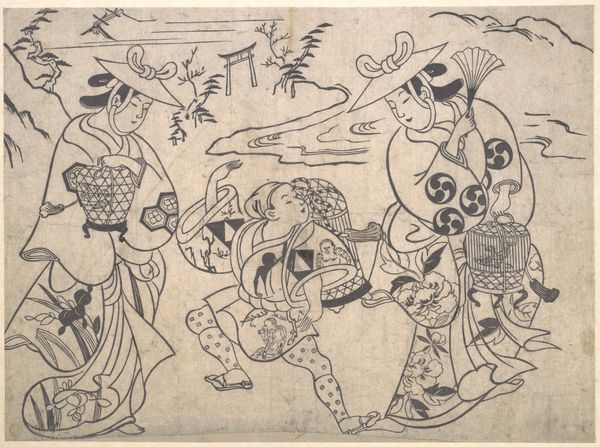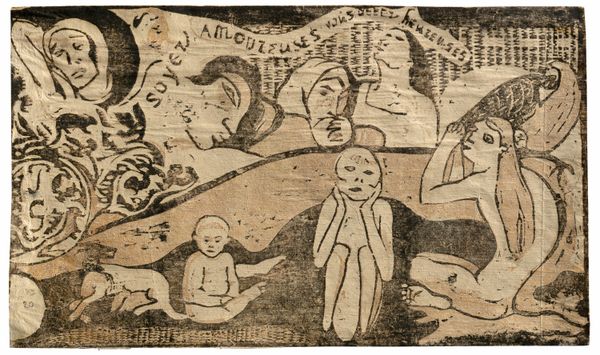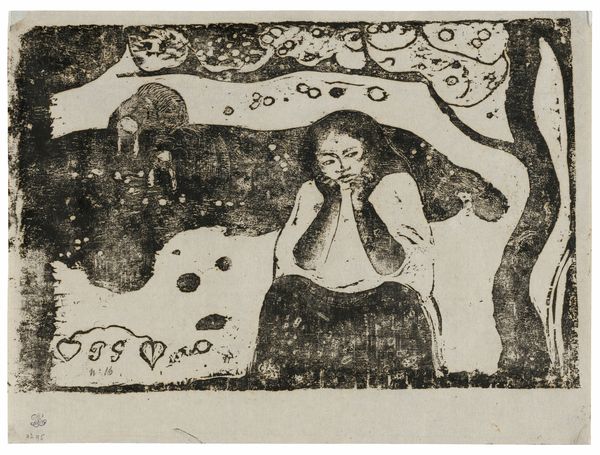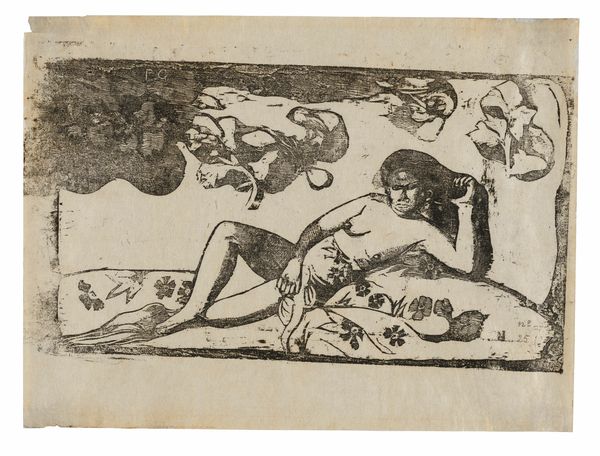
drawing, print, textile, woodcut
#
drawing
#
animal
# print
#
landscape
#
textile
#
figuration
#
woodcut
#
symbolism
#
genre-painting
#
post-impressionism
Dimensions: image: 6 3/8 x 11 3/16 in. (16.2 x 28.4 cm) sheet: 9 x 11 15/16 in. (22.8 x 30.4 cm)
Copyright: Public Domain
Curator: Right now we're looking at Paul Gauguin's 1898 woodcut print, "Women, Animals, and Foliage," currently held at the Metropolitan Museum of Art. It feels a bit like looking into a strange dreamscape, doesn’t it? Editor: Absolutely. Immediately, I see a dream loaded with primordial images. Adam and Eve seem to mingle with Tahitian figures and jungle animals... like some subconscious recollection mixing Genesis and Gauguin’s Polynesian experience. The crude cuts of the woodblock, too, amplify this feeling – of half-recalled imagery forcing its way onto the surface. Curator: Yes! The rough-hewn quality lends itself perfectly to expressing the primordial. There's a simplified, almost brutal directness in the way he's carved those figures and motifs, it cuts right through any artifice. He used woodcuts a lot later in life, as printmaking enabled him to reflect back on his painting years from his early life in the late 1870’s in France as a leisure activity. Editor: Look how many iconic themes are at play here! The woman holding out fruit, so suggestive of temptation. The intertwined figures evoking intimacy and perhaps, innocence lost. And then these enigmatic beasts. It's as if he's intentionally crowding the piece with powerful archetypes, daring us to decipher them. Even what appears like an ordinary dog curled inside a leaf becomes significant in the bigger schema! Curator: He wasn't interested in neat allegories, though, was he? I think that is really something that made him unique. For me, this image has always been more about a feeling, a state of mind – that feeling of being connected to the wild, untamed parts of ourselves and of nature. You mentioned this crude mark-making, his visual shorthand feels closer to instinct. This is where it becomes personal; maybe this all reveals what was alive in him in his final chapter in life. Editor: Well, exactly! This work also speaks volumes about Gauguin's approach to symbolism and identity construction – this longing for a supposedly authentic experience and the struggle to represent it. What might it mean that this experience needs such crude representation? Maybe something there about the limits of vision. It’s an echo chamber of layered meanings – personal and universal! Curator: Agreed. I always come away from this piece with more questions than answers. Editor: Precisely. It seems to almost challenge our interpretations of history, experience, and even art itself. What a journey to witness!
Comments
No comments
Be the first to comment and join the conversation on the ultimate creative platform.
